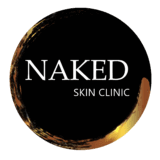Dermal fillers help provide much-needed volume to your loose skin. Although Dermal fillers are a standalone treatment, they can also be used along with other procedures, such as laser resurfacing. The use of dermal filler treatment is also rising in the market. Thus, every practitioner should first know the material used for the process. One should also know the advantages and disadvantages associated with it. Certain guidelines must be followed by every practitioner based on the experience of the members and the available data.
The materials, characters, types and classification of derma fillers
Derma fillers have many attributes. These attributes include:
- The substances
- Substance source
- Compounds
- Performance
- Duration
- Mechanism of action
- Consistency
- Approved indications and
- Substantiations
Apart from this, the preference of clients and providers may also differ. Some people opt for temporary fillers. In such cases, the per injection costs are less. In addition to this, the complications are also minor and rare. However, there can be a necessity for repeated injections and long-term maintenance. In the case of longer-duration fillers, the cost can be far less. However, you may have to deal with complications. If you want the best outcome, you should consider all these factors and the advice provided by the expert. Here are a few types of fillers:
Based on longevity:
Fillers can be classified as temporary, semi-permanent, and permanent based on their longevity.
Based on the placement:
Depending on the site of the placement, the fillers can be classified as Dermal, Subdermal, and Supraperiosteal.
Based on the filler material origin:
On the other hand, the fillers can also be classified based on their material – Heterograft, Allograft, Autograft, and Synthetic material.
Since Dermal fillers can be classified into various categories, a practitioner needs to know all the details about the manufacturer before using a filler.
Task Force Recommendations: Level D
Most patients opt for permanent fillers because they are cost-effective. However, as mentioned earlier, there may be complications associated with these types of fillers. Thus, it is the responsibility of the physician to explain to their patients the possible side effects and complications. Also, the recording of the facts in the informed consent form should be done.
An expert should know the information about the filler along with the approval status. The approval status differs from one country to another.

Indications: Level C
The most common indications of fillers are lips, wrinkles, scars, etc.
As mentioned earlier, the informed consent form should be taken from the patient. Therefore, consulting and explaining to the patient the necessary information is important. The consent form should also include all the details about the fillers, including chemical nature and source, usage, etc. Apart from this, the expected longevity, cost, approval status, side effects, etc, should also be consider.
In today’s world, fillers are used widely to limit signs of ageing. If done by a proper and experienced physician, you can get the best results.
At Naked Skin Clinic, we offer cost-effective dermal filler and anti-wrinkle treatment in Northern Beaches. To know more about skin treatments, contact us!.





Leave A Comment